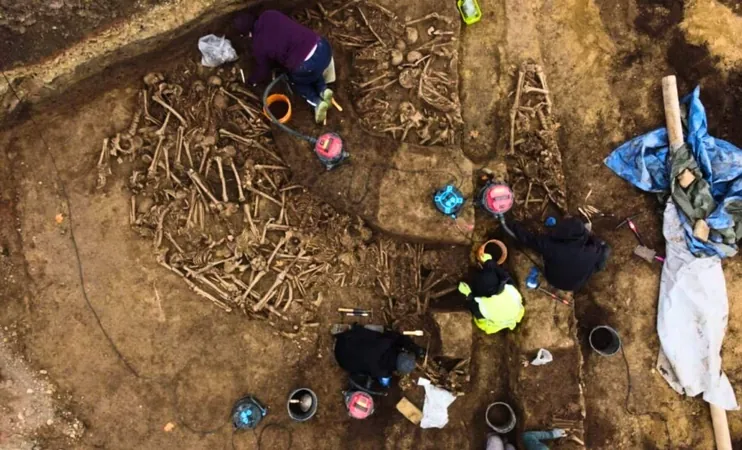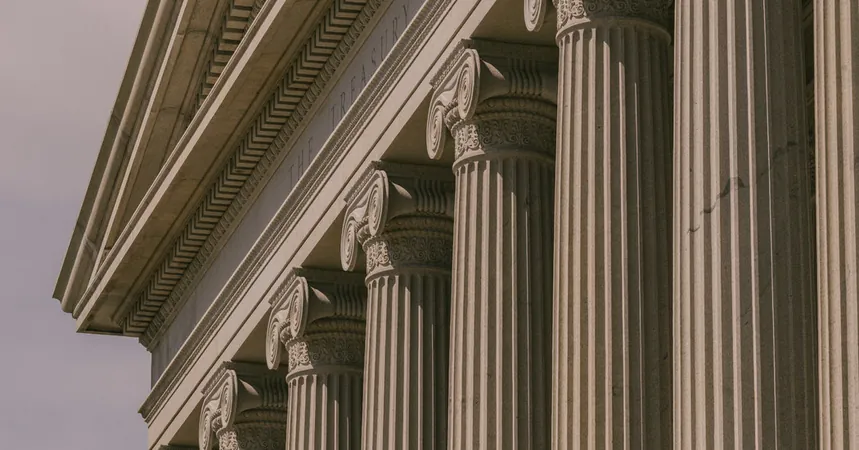
Mass Grave of 150 Roman Legionaries Discovered Beneath Vienna's Sports Field—The Shocking Truth About Ancient Warfare Revealed!
2025-04-06
Author: Lok
Remarkable Archaeological Discovery
A remarkable archaeological discovery has surfaced from beneath a sports field in the Simmering district of Vienna. During renovations in October last year, construction workers stumbled upon a mass grave containing the skeletal remains of approximately 150 individuals, igniting a sensational curiosity about the city’s ancient past.
Graphic Evidence of Combat
Experts from the Vienna City Archaeology Department, alongside Novetus GmbH, have conducted thorough investigations, concluding that these remains belong to Roman legionaries who met a tragic fate in battle nearly two millennia ago.
The analysis revealed gruesome details consistent with battle wounds, including injuries sustained from daggers, swords, and spears. The arrangement and condition of the bones indicate that these soldiers fell in combat, effectively ruling out an epidemic or hospital-related deaths. Surprisingly, the soldiers' teeth were found in excellent condition, suggesting they may have been relatively healthy before their untimely deaths at the hands of adversaries on the battlefield.
Accompanying these findings were various artifacts, pointing to a brutal conflict involving Roman troops and Germanic warriors. Among the notable discoveries were armor scales, lance tips, and a partially preserved iron dagger featuring intricate silver inlay, a hallmark of Roman military craftsmanship dating back to the mid-first to early second century CE.
Christoph Öllerer, deputy head of the Vienna Archaeology Department, emphasized that this period correlates with significant Roman military activity in the area. The unusual burial conditions provide a rare glimpse into the practices of the time, as inhumation was more uncommon in regions under Roman control.
Connections to Vindobona
Situated less than seven kilometers from Vindobona, the ancient military fort that eventually became modern-day Vienna, this site gives tangible evidence to historical accounts of skirmishes along the Danube Limes, the eastern frontier of the Roman Empire. During Emperor Domitian's rule (81–96 CE), confrontations between Roman forces and Germanic tribes were frequent, and this newly discovered grave could reveal why Vindobona expanded into a fortified legionary camp.
Archaeologist Martin Mosser remarked that this grave represents the first concrete archaeological evidence of a battle in this part of Austria, potentially reshaping our understanding of early military strategies and urban development in Vienna.
Reconsidering Vienna's Historical Landscape
Vienna’s Executive City Councillor for Culture and Science, Veronica Kaup-Hasler, expressed the significance of the find, stating, "In Vienna, it’s always exciting to uncover Roman remnants as we delve into our city’s foundations." Labeling the grave a "true sensation," she noted that this discovery sheds new light on the city’s martial past and its evolution from a transient military outpost to a thriving Roman stronghold.
Prior to this discovery, accounts of Vienna's Roman heritage largely stemmed from scattered artifacts and historical texts. However, this mass grave provides a visceral and detailed narrative of a long-lost clash that played a pivotal role in shaping the future of one of Europe's most vibrant cities.
Could this finding create a ripple effect in how we view urban development during the Roman period? Only time will tell, but one thing is clear: Vienna's ancient battlefield has now unveiled truths that could rewrite history!




 Brasil (PT)
Brasil (PT)
 Canada (EN)
Canada (EN)
 Chile (ES)
Chile (ES)
 Česko (CS)
Česko (CS)
 대한민국 (KO)
대한민국 (KO)
 España (ES)
España (ES)
 France (FR)
France (FR)
 Hong Kong (EN)
Hong Kong (EN)
 Italia (IT)
Italia (IT)
 日本 (JA)
日本 (JA)
 Magyarország (HU)
Magyarország (HU)
 Norge (NO)
Norge (NO)
 Polska (PL)
Polska (PL)
 Schweiz (DE)
Schweiz (DE)
 Singapore (EN)
Singapore (EN)
 Sverige (SV)
Sverige (SV)
 Suomi (FI)
Suomi (FI)
 Türkiye (TR)
Türkiye (TR)
 الإمارات العربية المتحدة (AR)
الإمارات العربية المتحدة (AR)